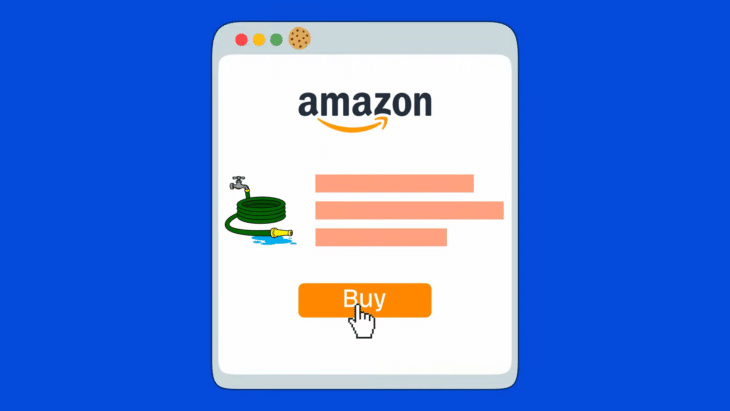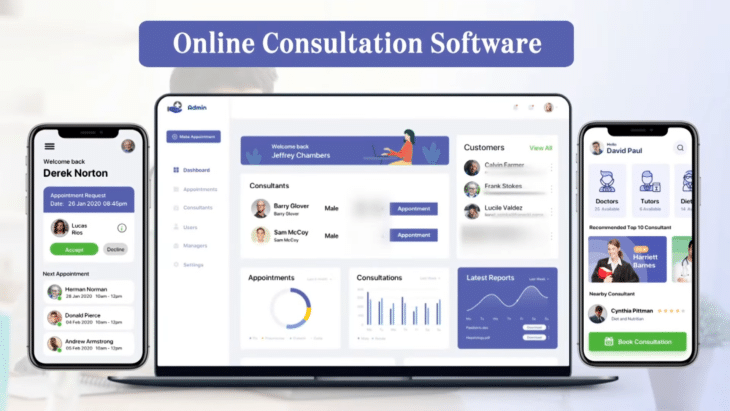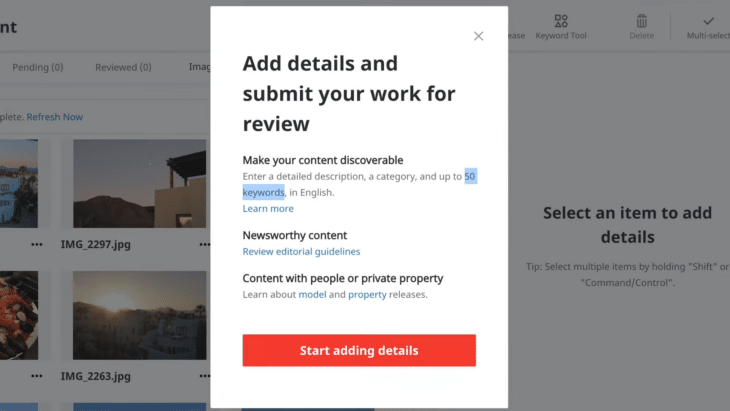Starting an online business in 2024 offers a chance to achieve financial independence and pursue your passions. The digital world provides numerous opportunities with minimal startup costs. From selling niche products to offering freelance services, there are many viable options to explore.
This article presents specific online business ideas that you can launch quickly, each with a great potential for success.
Table of Contents
ToggleThese Are the Best Online Business Ideas For 2024
| Online Business Idea | |
|---|---|
| 1 | E-commerce Store |
| 2 | Print on Demand |
| 3 | Dropshipping |
| 4 | Digital Products |
| 5 | Subscription Box Service |
| 6 | Freelance Services |
| 7 | Online Coaching and Consulting |
| 8 | Affiliate Marketing |
| 9 | Blogging and Content Creation |
| 10 | Virtual Assistant Services |
| 11 | Social Media Management |
| 12 | App Development |
| 13 | Online Course Creation |
| 14 | SEO Consulting |
| 15 | Stock Photography |
1. E-commerce Store
| Aspect | Details |
|---|---|
| Platform | Shopify, WooCommerce |
| Initial Investment | $29 – $299/month (Shopify), $0 – $30/month (WooCommerce) |
| Potential Income | $1,000 – $50,000+/month |
| Time to Start | 1 – 2 weeks |
| Skills Required | Basic web design, product sourcing, marketing |
Starting an e-commerce store is a popular and effective way to enter the online business world. Platforms like Shopify and WooCommerce make it relatively easy to set up a store, manage products, and process payments. These platforms offer various pricing plans to suit different business sizes and needs.
Examples
- Gymshark: Started as a small e-commerce store selling fitness apparel, Gymshark grew into a multi-million dollar business within a few years.
- Casper: An online mattress retailer that disrupted the traditional mattress industry and reached over $100 million in sales within the first two years.
Potential Income
The potential income for an e-commerce store varies widely depending on the niche, product demand, and marketing effectiveness. Successful stores can earn anywhere from $1,000 to over $50,000 per month. For instance, niche stores selling unique or high-demand products often see higher profit margins.
Setting Up

- Choose a Platform: Decide between Shopify and WooCommerce based on your budget and technical skills. Shopify is user-friendly and includes hosting, while WooCommerce is a plugin for WordPress and offers more customization.
- Select a Niche: Research and choose a niche with good demand and manageable competition. Tools like Google Trends and keyword planners can help in identifying profitable niches.
- Source Products: Find reliable suppliers. Options include Alibaba for international suppliers, or local wholesalers. You can also consider print on demand for custom products.
- Design Your Store: Use pre-built themes available on your chosen platform to design an attractive and functional store. Ensure the design is mobile-friendly.
- Set Up Payment Processing: Integrate payment gateways like PayPal, Stripe, or Shopify Payments to accept online payments securely.
- Launch and Market: Once your store is set up, launch it and start marketing. Use social media, email marketing, and paid advertising to drive traffic to your store.
Marketing Strategies
- Social Media Advertising: Platforms like Facebook, Instagram, and Pinterest are excellent for targeting specific demographics and driving traffic to your store.
- Search Engine Optimization (SEO): Optimize your product descriptions, blog posts, and website structure to rank higher in search engine results.
- Influencer Collaborations: Partner with influencers in your niche to promote your products and reach a larger audience.
- Email Marketing: Build an email list and send regular newsletters, promotions, and updates to engage with your customers and encourage repeat purchases.
2. Print on Demand
| Aspect | Details |
|---|---|
| Platform | Printful, Teespring, Redbubble |
| Initial Investment | $0 – $50/month |
| Potential Income | $500 – $10,000+/month |
| Time to Start | 1 – 2 weeks |
| Skills Required | Basic graphic design, marketing |
Print on demand (POD) is an e-commerce model where products like T-shirts, mugs, and phone cases are customized with unique designs and printed only after an order is made. This model eliminates the need for inventory, reducing upfront costs and risks.
Examples
- Teespring: A platform where creators design and sell custom apparel and merchandise. Successful campaigns can earn thousands of dollars.
- Redbubble: An online marketplace for artists to sell their designs on various products. Many artists generate a steady income from their designs.
Potential Income
Income from a print on demand business can vary widely. Some individuals make a few hundred dollars a month, while others with popular designs and effective marketing strategies can earn $10,000 or more per month. Success largely depends on the uniqueness and appeal of the designs, as well as marketing efforts.
Setting Up

- Choose a Platform: Select a POD platform such as Printful, Teespring, or Redbubble. Each platform has different features and fees, so choose one that best fits your needs.
- Create Designs: Use graphic design software like Adobe Illustrator or free tools like Canva to create unique and appealing designs. Ensure your designs are high-quality and cater to your target audience.
- Set Up Your Store: If using a platform like Teespring or Redbubble, you can set up your store directly on their site. For Printful, you may need to integrate it with an e-commerce platform like Shopify.
- Add Products: Upload your designs to the platform and choose the products you want to sell. Most platforms offer a variety of items, from apparel to home decor.
- Market Your Store: Promote your store through social media, email marketing, and SEO. Utilize platforms like Instagram and Pinterest to showcase your designs and reach a broader audience.
Marketing Strategies
- Social Media Marketing: Use platforms like Instagram, Facebook, and Pinterest to showcase your designs. Engage with your audience through regular posts and stories.
- SEO: Optimize your product titles, descriptions, and tags to improve visibility on search engines and within the POD platform’s search results.
- Collaborations: Partner with influencers or other artists to expand your reach and attract new customers.
- Email Campaigns: Collect emails from customers and potential buyers to send them updates on new designs, promotions, and sales.
3. Dropshipping
| Aspect | Details |
|---|---|
| Platform | Shopify, Oberlo, AliExpress |
| Initial Investment | $29 – $299/month (Shopify), plus marketing costs |
| Potential Income | $500 – $50,000+/month |
| Time to Start | 1 – 2 weeks |
| Skills Required | Marketing, product research, customer service |
Dropshipping is an e-commerce model where you sell products without holding any inventory. When a customer places an order, the supplier ships the products directly to them. This model minimizes the risks and costs associated with inventory management.
Examples
- ColourPop: A cosmetics company that started as a dropshipping business and grew into a popular brand with millions in sales.
- Hawkers: A sunglasses company that began with a dropshipping model and became a globally recognized brand.
Potential Income
The income from a dropshipping business can range from a few hundred dollars to over $50,000 per month, depending on the niche, product demand, and marketing effectiveness. Successful dropshippers often focus on high-demand products and utilize targeted marketing strategies.
Setting Up
- Choose a Platform: Platforms like Shopify make it easy to set up a dropshipping store. Integrate with tools like Oberlo to connect with suppliers and add products to your store.
- Select a Niche: Research and choose a profitable niche. Use tools like Google Trends, Ahrefs, and SEMrush to identify high-demand products with low competition.
- Find Reliable Suppliers: Use platforms like AliExpress or Oberlo to find suppliers. Look for suppliers with good reviews, reliable shipping times, and competitive prices.
- Design Your Store: Use a Shopify theme to create a professional and user-friendly store. Ensure your website is mobile-friendly and optimized for conversions.
- Add Products: Import products from your chosen suppliers into your store. Write compelling product descriptions and use high-quality images.
- Launch and Market: Once your store is ready, launch it and start marketing. Use social media, search engine ads, and email marketing to drive traffic to your store.
Marketing Strategies
- Social Media Advertising: Platforms like Facebook, Instagram, and TikTok are effective for targeting specific demographics and driving traffic to your store.
- Influencer Marketing: Collaborate with influencers in your niche to promote your products and reach a wider audience.
- SEO: Optimize your website for search engines to attract organic traffic. Focus on product keywords and create valuable content related to your niche.
- Email Marketing: Build an email list and send regular newsletters, promotions, and updates to engage with your customers and encourage repeat purchases.
4. Digital Products
| Aspect | Details |
|---|---|
| Platform | Gumroad, Etsy, Teachable |
| Initial Investment | $0 – $100/month |
| Potential Income | $500 – $30,000+/month |
| Time to Start | 1 – 4 weeks |
| Skills Required | Content creation, digital marketing, graphic design (optional) |
Selling digital products is an excellent way to generate passive income online. Digital products include eBooks, courses, software, printables, music, and more. These products require an initial time investment to create but can be sold repeatedly without additional production costs.
Examples
- eBooks: Authors like Amanda Hocking and E.L. James started their careers by self-publishing eBooks and have earned millions in revenue.
- Online Courses: Platforms like Teachable and Udemy allow creators to sell courses on various subjects. Courses on digital marketing, coding, and personal development are particularly popular.
- Software: Indie developers have found success by creating and selling software tools or mobile apps. For example, the developer of Flappy Bird reportedly earned $50,000 per day from ad revenue at its peak.
Potential Income
Income from selling digital products can vary significantly based on the product type and marketing efforts. Some creators make a few hundred dollars a month, while others earn tens of thousands. The key is to create high-quality products that meet demand and to market them effectively.
Setting Up

- Choose a Platform: Depending on your product type, choose a platform that fits your needs. Gumroad is great for selling digital downloads, Etsy for printables, and Teachable for online courses.
- Create Your Product: Invest time in creating a high-quality digital product. If you’re writing an eBook, ensure it is well-researched and professionally edited. For courses, create engaging and informative video content.
- Design Marketing Materials: Create compelling product descriptions, sales pages, and promotional graphics. These materials will help attract and convert potential buyers.
- Set Up Payment Processing: Ensure your chosen platform supports secure payment methods, such as PayPal, Stripe, or direct credit card payments.
- Launch and Market: Launch your product and start promoting it through various channels. Use social media, email marketing, and SEO to drive traffic to your sales page.
Marketing Strategies
- Content Marketing: Create valuable content related to your product to attract organic traffic. For example, blog posts, YouTube videos, or podcasts can drive interest in your eBook or course.
- Social Media Promotion: Use social media platforms to build an audience and promote your digital products. Platforms like Instagram, Facebook, and LinkedIn are effective for different niches.
- Email Marketing: Build an email list of interested potential customers and send them updates, promotional offers, and valuable content to encourage purchases.
- Collaborations and Partnerships: Partner with influencers, bloggers, or other creators to expand your reach. Collaborations can help you tap into new audiences.
5. Subscription Box Service
| Aspect | Details |
|---|---|
| Platform | Cratejoy, Shopify, Subbly |
| Initial Investment | $50 – $200/month |
| Potential Income | $1,000 – $20,000+/month |
| Time to Start | 2 – 4 weeks |
| Skills Required | Product curation, marketing, customer service |
A subscription box service involves curating and delivering a box of niche products to customers on a regular basis, typically monthly. This model provides recurring revenue and allows for building a loyal customer base by delivering consistent value.
Examples
- Birchbox: A beauty subscription service that delivers a selection of beauty samples. Birchbox quickly grew to become a leader in the subscription box industry, generating millions in revenue.
- Dollar Shave Club: This subscription service sends razors and grooming products to customers. It became highly successful and was acquired by Unilever for $1 billion.
Potential Income
Income from a subscription box service can vary widely depending on the niche and customer base. Successful boxes can generate $1,000 to over $20,000 per month. The key factors include the perceived value of the box, marketing efforts, and customer retention rates.
Setting Up

- Choose a Platform: Use platforms like Cratejoy, Shopify, or Subbly to set up your subscription box service. These platforms offer tools to manage subscriptions, payments, and shipping.
- Select a Niche: Choose a niche that you are passionate about and that has market demand. Examples include beauty products, snacks, fitness gear, or books.
- Source Products: Find reliable suppliers for the products you want to include in your box. Negotiate wholesale prices to maintain good profit margins.
- Design Your Box: Create an appealing and branded box design. The unboxing experience should be enjoyable and memorable for your customers.
- Set Up Payment and Shipping: Ensure your platform supports recurring payments and integrates with shipping services to automate the process.
- Launch and Market: Launch your subscription box service and promote it through various channels. Focus on building an email list and using social media to attract subscribers.
Marketing Strategies
- Influencer Marketing: Partner with influencers in your niche to promote your subscription box. Influencers can provide authentic reviews and reach a larger audience.
- Social Media Advertising: Use targeted ads on platforms like Facebook and Instagram to reach potential subscribers. Highlight the unique value and exclusivity of your box.
- Content Marketing: Create blog posts, videos, and social media content related to your niche to attract organic traffic and build brand awareness.
- Referral Programs: Implement a referral program to encourage your existing customers to refer friends and family. Offer incentives such as discounts or free products for successful referrals.
6. Freelance Services
| Aspect | Details |
|---|---|
| Platform | Upwork, Fiverr, Freelancer |
| Initial Investment | $0 – $50/month |
| Potential Income | $500 – $20,000+/month |
| Time to Start | 1 – 2 weeks |
| Skills Required | Specific to service offered (e.g., writing, design, programming) |
Freelance services encompass a wide range of skills that can be offered on a project or contract basis. Common freelance services include writing, graphic design, web development, digital marketing, and more. Platforms like Upwork, Fiverr, and Freelancer connect freelancers with clients seeking specific skills.
Examples
- Freelance Writing: Writers can offer services like content creation, copywriting, and editing. Successful freelancers can earn a steady income by building a portfolio and gaining repeat clients.
- Graphic Design: Designers can create logos, marketing materials, and website graphics for businesses. High-demand and specialized skills often command higher rates.
- Web Development: Developers can build and maintain websites or applications. This skill is in high demand, and experienced developers can charge premium rates for their services.
Potential Income
Freelance income varies widely based on skill level, industry, and client demand. Beginners might start at lower rates, earning a few hundred dollars a month, while experienced professionals can earn $20,000 or more per month. Building a strong portfolio and reputation can lead to higher-paying opportunities.
Setting Up

- Choose a Platform: Register on freelance platforms like Upwork, Fiverr, or Freelancer. These platforms provide access to a large pool of potential clients.
- Create a Profile: Build a compelling profile that highlights your skills, experience, and portfolio. Include client testimonials if available.
- Define Your Services: Clearly outline the services you offer, pricing, and delivery timeframes. Tailor your offerings to meet market demand.
- Start Bidding or Listing: On platforms like Upwork, bid on relevant projects. On Fiverr, create service listings that showcase your skills.
- Market Your Services: Use social media, professional networks, and your own website to promote your freelance services and attract clients.
Marketing Strategies
- Portfolio Development: Build a strong portfolio showcasing your best work. Include detailed descriptions and results to demonstrate your expertise.
- Networking: Connect with potential clients through LinkedIn, industry forums, and networking events. Building relationships can lead to referrals and repeat business.
- Content Marketing: Create valuable content related to your field, such as blog posts, tutorials, or case studies. This can attract potential clients and establish you as an authority.
- Client Testimonials: Collect and display testimonials from satisfied clients. Positive reviews can significantly enhance your credibility and attract new clients.
7. Online Coaching and Consulting
| Aspect | Details |
|---|---|
| Platform | Zoom, Teachable, Kajabi |
| Initial Investment | $50 – $200/month |
| Potential Income | $1,000 – $20,000+/month |
| Time to Start | 2 – 4 weeks |
| Skills Required | Expertise in specific fields, communication, marketing |
Online coaching and consulting involve providing expert advice and guidance in specific fields such as business, health, fitness, or personal development. This model allows you to leverage your expertise to help others achieve their goals, typically through one-on-one sessions, group coaching, or online courses.
Examples
- Business Coaching: Professionals like Marie Forleo offer business coaching services, helping entrepreneurs grow their businesses through tailored advice and strategies.
- Health and Wellness Coaching: Coaches like Dr. Axe provide guidance on nutrition, fitness, and overall wellness, offering personalized plans and support to clients.
Potential Income
Income from online coaching and consulting can range widely. Coaches and consultants often charge hourly rates, package rates, or subscription fees. Depending on your niche, expertise, and client base, income can range from $1,000 to over $20,000 per month.
Setting Up
- Choose a Platform: Use platforms like Zoom for live coaching sessions, Teachable or Kajabi for creating and selling online courses. These platforms offer tools for scheduling, payments, and course delivery.
- Define Your Niche: Identify a specific area where you have expertise and can provide valuable advice. This can be anything from marketing strategies to life coaching.
- Develop Your Offerings: Create a range of services, such as one-on-one coaching, group sessions, and self-paced online courses. Define your pricing and packages.
- Build an Online Presence: Develop a professional website and social media profiles to showcase your expertise and services. Include client testimonials and case studies.
- Market Your Services: Promote your coaching and consulting services through content marketing, social media, and professional networks. Offer free webinars or workshops to attract potential clients.
Marketing Strategies
- Content Marketing: Create blog posts, videos, and podcasts that provide valuable insights and tips related to your niche. This can attract potential clients and establish you as an authority.
- Social Media Engagement: Use platforms like LinkedIn, Instagram, and Facebook to connect with your audience, share success stories, and promote your services.
- Email Marketing: Build an email list and send regular newsletters with valuable content, updates, and promotions. This helps maintain engagement and attract new clients.
- Webinars and Workshops: Host free or paid webinars and workshops to demonstrate your expertise and attract potential clients. These events can also serve as lead magnets for your services.
8. Affiliate Marketing
| Aspect | Details |
|---|---|
| Platform | Amazon Associates, ShareASale, CJ Affiliate |
| Initial Investment | $0 – $50/month |
| Potential Income | $100 – $10,000+/month |
| Time to Start | 2 – 4 weeks |
| Skills Required | Digital marketing, content creation, SEO |
Affiliate marketing involves promoting products or services from other companies and earning a commission for each sale made through your referral link. This model is popular because it requires minimal upfront investment and no need for inventory management. By creating content that drives traffic to affiliate links, you can generate passive income.
Also, learn more about the difference between High-Ticket vs. Low-Ticket Affiliate Marketing.
Examples
- Pat Flynn: Known for his website Smart Passive Income, Pat Flynn generates significant revenue through affiliate marketing by promoting tools and services to his audience.
- Michelle Schroeder-Gardner: Through her blog, Making Sense of Cents, Michelle earns over $100,000 per month from affiliate marketing by recommending financial products and services.
Potential Income
The income from affiliate marketing varies widely based on the niche, traffic volume, and commission rates. Some affiliates earn a few hundred dollars a month, while top performers can earn $10,000 or more. Success in affiliate marketing often depends on the quality of content and the ability to drive targeted traffic to affiliate links.
Setting Up

- Choose a Platform: Register with affiliate programs such as Amazon Associates, ShareASale, or CJ Affiliate. These platforms offer a wide range of products and services to promote.
- Select a Niche: Identify a niche where you can provide valuable content and recommendations. Popular niches include health, finance, technology, and lifestyle.
- Create Content: Develop high-quality content that attracts and engages your target audience. This can include blog posts, videos, product reviews, and social media posts.
- Optimize for SEO: Ensure your content is optimized for search engines to drive organic traffic. Use relevant keywords, meta descriptions, and backlinks to improve your rankings.
- Promote Affiliate Links: Integrate affiliate links naturally within your content. Provide honest and helpful recommendations to build trust with your audience.
Marketing Strategies
- Content Marketing: Focus on creating valuable and informative content that solves problems or answers questions for your audience. This helps attract organic traffic and encourages clicks on affiliate links.
- Social Media: Use platforms like Instagram, YouTube, and Pinterest to share content and promote affiliate products. Engage with your audience to build a community around your niche.
- Email Marketing: Build an email list and send regular newsletters with valuable content and product recommendations. Use email campaigns to promote affiliate offers and track performance.
- SEO: Optimize your website and content for search engines. Focus on long-tail keywords and create in-depth articles that rank well and attract targeted traffic.
9. Blogging and Content Creation
| Aspect | Details |
|---|---|
| Platform | WordPress, Medium, Substack |
| Initial Investment | $0 – $100/month |
| Potential Income | $100 – $10,000+/month |
| Time to Start | 2 – 4 weeks |
| Skills Required | Writing, SEO, digital marketing |
Blogging and content creation involve producing valuable and engaging content for an audience. This can be in the form of articles, videos, podcasts, or social media posts. Monetization options include advertising, sponsored content, affiliate marketing, and selling digital products or services.
Examples
- HuffPost: Started as a small blog, HuffPost grew into a massive media company generating significant revenue through advertising and sponsored content.
- Pinch of Yum: A food blog that earns a substantial income through ad revenue, affiliate marketing, and selling online courses and eBooks.
Potential Income
The income from blogging and content creation varies widely. Beginners might earn a few hundred dollars a month, while successful bloggers can earn $10,000 or more per month. Key factors include the quality and consistency of content, audience engagement, and effective monetization strategies.
Setting Up

- Choose a Platform: Platforms like WordPress offer flexibility and customization, while Medium and Substack are easier to set up and manage. Choose a platform that fits your goals and technical skills.
- Select a Niche: Identify a niche where you can provide valuable content. Popular niches include health, finance, travel, lifestyle, and technology.
- Create Content: Start by producing high-quality content that addresses your audience’s needs and interests. Consistency is crucial, so develop a content calendar to plan and schedule posts.
- Optimize for SEO: Use keyword research tools to identify relevant topics and optimize your content for search engines. Focus on on-page SEO elements like titles, meta descriptions, and internal linking.
- Monetize Your Blog: Explore different monetization options, such as display ads (Google AdSense), sponsored posts, affiliate marketing, and selling digital products or services.
Marketing Strategies
- Social Media Promotion: Share your content on social media platforms like Facebook, Twitter, Instagram, and Pinterest to drive traffic to your blog.
- Email Marketing: Build an email list and send regular newsletters to keep your audience engaged and drive traffic to new content.
- Guest Blogging: Write guest posts for other blogs in your niche to increase your visibility and attract new readers.
- SEO: Continuously optimize your content and website for search engines to improve your organic search rankings and attract more visitors.
10. Virtual Assistant Services
| Aspect | Details |
|---|---|
| Platform | Upwork, Fiverr, Virtual Assistant Forums |
| Initial Investment | $0 – $50/month |
| Potential Income | $500 – $10,000+/month |
| Time to Start | 1 – 2 weeks |
| Skills Required | Administrative skills, communication, time management |
Virtual assistants (VAs) provide administrative support to businesses and entrepreneurs remotely. Tasks can include managing emails, scheduling appointments, social media management, data entry, customer service, and more. This role offers flexibility and the opportunity to work with a variety of clients.
Examples
- Belay Solutions: A well-known company that hires virtual assistants to provide administrative support to clients in various industries.
- Time Etc: Another reputable company that connects clients with skilled virtual assistants for tasks ranging from bookkeeping to project management.
Potential Income
Income for virtual assistants varies based on experience, skills, and the type of tasks performed. Beginners might start with lower rates, earning around $500 to $1,000 per month, while experienced VAs with specialized skills can earn $10,000 or more per month.
Setting Up
- Choose a Platform: Sign up on platforms like Upwork, Fiverr, or specialized VA forums to find job opportunities. These platforms connect freelancers with clients looking for remote assistance.
- Create a Profile: Build a professional profile highlighting your skills, experience, and services offered. Include any relevant certifications or testimonials from previous clients.
- Define Your Services: Clearly outline the services you offer, such as email management, calendar scheduling, social media management, or customer support. Set competitive rates based on your experience.
- Market Your Services: Promote your VA services through social media, LinkedIn, and professional networks. Reach out to potential clients and offer free initial consultations to showcase your expertise.
- Manage Your Time: Use productivity tools and apps to manage your tasks efficiently. Tools like Trello, Asana, and Google Calendar can help you stay organized and meet deadlines.
Marketing Strategies
- Social Media Presence: Use LinkedIn, Facebook, and Instagram to showcase your services and connect with potential clients. Share tips, success stories, and client testimonials.
- Networking: Join online forums, virtual assistant groups, and industry-specific communities to network with other professionals and find job opportunities.
- Content Marketing: Create a blog or YouTube channel to share valuable content related to virtual assistance, productivity, and remote work. This can attract potential clients and establish your expertise.
- Referrals: Encourage satisfied clients to refer your services to others. Offer referral incentives or discounts to clients who bring in new business.
11. Social Media Management
| Aspect | Details |
|---|---|
| Platform | Hootsuite, Buffer, Sprout Social |
| Initial Investment | $0 – $100/month |
| Potential Income | $1,000 – $10,000+/month |
| Time to Start | 2 – 4 weeks |
| Skills Required | Social media strategy, content creation, analytics |
Social media management involves creating, scheduling, analyzing, and engaging with content posted on social media platforms like Facebook, Instagram, Twitter, and LinkedIn. Businesses hire social media managers to enhance their online presence, engage with customers, and drive traffic to their websites.
Examples
- Jenn Herman: A social media strategist who offers consulting services, manages social media accounts, and provides training on best practices.
- Neil Patel: A digital marketing expert whose agency offers comprehensive social media management services to businesses of all sizes.
Potential Income
Income for social media managers can vary widely based on experience, client base, and the range of services offered. Beginners might earn $1,000 to $2,000 per month, while experienced managers handling multiple clients or large accounts can earn $10,000 or more per month.
Setting Up

- Choose a Platform: Utilize tools like Hootsuite, Buffer, or Sprout Social to manage multiple social media accounts efficiently. These platforms offer features for scheduling, analytics, and engagement.
- Define Your Services: Offer a range of services including content creation, scheduling posts, engaging with followers, running ads, and analyzing performance metrics.
- Build Your Portfolio: Create sample social media posts and case studies showcasing your ability to grow and engage an audience. Offer free initial services to a few clients to build your portfolio.
- Market Your Services: Promote your social media management services through your own social media profiles, website, and professional networks. Highlight your success stories and client testimonials.
- Stay Updated: Social media trends and algorithms change frequently. Stay updated with the latest trends, tools, and best practices to provide the best service to your clients.
Marketing Strategies
- Social Media Presence: Showcase your expertise by maintaining an active and engaging social media presence. Share tips, insights, and success stories to attract potential clients.
- Networking: Join social media groups, forums, and communities related to digital marketing and social media management. Network with other professionals and potential clients.
- Content Marketing: Create valuable content such as blog posts, videos, and infographics that provide insights into effective social media strategies. This can attract clients looking for expertise in this area.
- Referrals and Testimonials: Encourage satisfied clients to refer your services and provide testimonials. Positive reviews can significantly enhance your credibility and attract new clients.
12. App Development
| Aspect | Details |
|---|---|
| Platform | Android (Google Play), iOS (Apple App Store) |
| Initial Investment | $25 (Google Play), $99/year (Apple App Store) |
| Potential Income | $1,000 – $50,000+/month |
| Time to Start | 1 – 3 months |
| Skills Required | Programming, UX/UI design, marketing |
App development involves creating software applications for mobile devices, which can be distributed through platforms like Google Play and the Apple App Store. This business model leverages the growing use of smartphones and the increasing demand for mobile applications.
Examples
- Flappy Bird: Created by a solo developer, Flappy Bird became a viral sensation and generated significant revenue through ad placements.
- WhatsApp: Initially developed by a small team, WhatsApp grew to become a globally used messaging app and was acquired by Facebook for $19 billion.
Potential Income
Income from app development can vary greatly depending on the app’s popularity, pricing model, and monetization strategy. Successful apps can generate $1,000 to $50,000 or more per month through direct sales, in-app purchases, and advertising revenue.
Setting Up

- Choose a Platform: Decide whether to develop for Android, iOS, or both. Each platform has its own development environment and requirements.
- Learn the Basics: If you are new to app development, take courses on platforms like Udemy or Coursera to learn programming languages such as Java, Swift, or Kotlin.
- Develop Your App: Use development tools like Android Studio for Android apps or Xcode for iOS apps. Focus on creating a user-friendly interface and ensuring your app provides value to users.
- Test Your App: Conduct thorough testing to identify and fix bugs. Use tools like TestFlight for iOS and Google Play Console for Android to manage beta testing.
- Publish Your App: Register as a developer on Google Play and/or the Apple App Store. Submit your app for review and follow the guidelines for app approval.
- Market Your App: Promote your app through social media, app review sites, and digital marketing campaigns to attract users and generate downloads.
Marketing Strategies
- App Store Optimization (ASO): Optimize your app’s title, description, and keywords to improve visibility in app store search results.
- Social Media Advertising: Use targeted ads on platforms like Facebook, Instagram, and Twitter to reach potential users and drive app downloads.
- Influencer Partnerships: Collaborate with influencers who can promote your app to their followers and provide authentic reviews.
- Content Marketing: Create blog posts, videos, and tutorials that highlight the features and benefits of your app. This can help attract organic traffic and build interest.
- User Engagement: Encourage user reviews and feedback to improve your app and build a loyal user base. Regularly update your app with new features and improvements.
13. Online Course Creation
| Aspect | Details |
|---|---|
| Platform | Udemy, Teachable, Kajabi |
| Initial Investment | $0 – $150/month |
| Potential Income | $1,000 – $50,000+/month |
| Time to Start | 1 – 3 months |
| Skills Required | Subject expertise, content creation, video editing |
Creating and selling online courses involves developing educational content that people can purchase and complete at their own pace. This model leverages your expertise to help others learn new skills, whether in business, technology, arts, or personal development.
Examples
- Rob Percival: A web developer who has earned millions by teaching coding courses on Udemy.
- Graham Cochrane: Founder of The Recording Revolution, Graham sells online courses on music production and has built a significant income stream from his courses.
Potential Income
Income from online courses can be substantial, depending on the course quality, marketing efforts, and demand for the subject. Successful course creators can earn between $1,000 and $50,000 or more per month. Courses on high-demand topics with effective promotion tend to generate higher revenues.
Setting Up

- Choose a Platform: Select a platform to host your courses, such as Udemy, Teachable, or Kajabi. These platforms provide tools for course creation, student management, and payment processing.
- Identify Your Niche: Choose a topic where you have expertise and that has a high demand. Conduct market research to ensure there is an audience for your course.
- Create Course Content: Develop comprehensive course materials, including video lectures, slides, quizzes, and assignments. Use tools like Camtasia or Adobe Premiere for video editing.
- Set Up Your Course: Upload your content to the chosen platform, organize it into modules or sections, and add descriptions, pricing, and promotional materials.
- Launch and Promote: Once your course is ready, launch it on the platform and start marketing. Use various strategies to attract students and generate sales.
Marketing Strategies
- Social Media Promotion: Share information about your course on social media platforms like Facebook, LinkedIn, Instagram, and Twitter. Use targeted ads to reach your ideal audience.
- Content Marketing: Create blog posts, YouTube videos, and podcasts that provide value related to your course topic. This content can attract potential students and establish your authority.
- Email Marketing: Build an email list and send regular newsletters with valuable content and course promotions. Offer discounts or early access to your subscribers.
- Affiliate Marketing: Partner with influencers or other course creators to promote your course. Offer them a commission for every sale they generate.
- Webinars: Host free webinars to provide a preview of your course content. Use these sessions to engage with potential students and encourage them to enroll in your course.
14. SEO Consulting
| Aspect | Details |
|---|---|
| Platform | Your own website, LinkedIn, Upwork |
| Initial Investment | $0 – $100/month |
| Potential Income | $1,000 – $20,000+/month |
| Time to Start | 1 – 2 months |
| Skills Required | SEO expertise, analytical skills, digital marketing |
Online business ideas involve helping businesses improve their online visibility and search engine rankings. As an SEO consultant, you analyze, review, and implement changes to websites to optimize them for search engines, which can lead to increased organic traffic and higher revenue for clients.
Examples
How to Become an SEO Expert: The Definitive Guide [New]
-Learning frameworks
-Top SEO resources
-Emerging trends
-Lots morehttps://t.co/DaSaGfGZXb
— Brian Dean (@BrianEDean) August 13, 2019
- Brian Dean: Founder of Backlinko, Brian Dean is known for his SEO expertise and consulting services, helping companies improve their search engine rankings.
- Neil Patel: A digital marketing expert who offers SEO consulting and has worked with major brands to enhance their online presence.
Potential Income
Income from SEO consulting can range from $1,000 to $20,000 or more per month, depending on your experience, client base, and the scope of services offered. Established consultants with a strong reputation and high-demand skills can command higher fees.
Setting Up
- Create a Website: Develop a professional website to showcase your SEO services, case studies, and client testimonials. Ensure your website is optimized for search engines.
- Build a Portfolio: Start by offering free or discounted services to a few clients to build a portfolio. Showcase successful case studies on your website.
- Network and Market: Use LinkedIn, professional networks, and digital marketing to promote your services. Attend industry events and webinars to connect with potential clients.
- Offer a Range of Services: Provide comprehensive SEO services, including keyword research, on-page optimization, technical SEO, link building, and content strategy.
- Stay Updated: SEO is an ever-evolving field. Stay current with the latest trends, algorithm updates, and best practices to provide the best service to your clients.
Marketing Strategies
- Content Marketing: Create valuable content related to SEO on your blog, YouTube channel, or podcast. Share tips, case studies, and industry news to attract potential clients.
- Social Media: Use platforms like LinkedIn, Twitter, and Facebook to share your expertise and engage with your audience. Post regularly and participate in relevant discussions.
- SEO for Your Site: Optimize your own website to rank for SEO-related keywords. Demonstrating your skills on your own site can attract clients looking for SEO services.
- Email Marketing: Build an email list and send regular newsletters with SEO tips, updates, and promotions. Offer a free SEO audit to subscribers as a lead magnet.
- Referrals: Encourage satisfied clients to refer your services to others. Offer referral incentives or discounts for successful referrals.
15. Stock Photography
| Aspect | Details |
|---|---|
| Platform | Shutterstock, Adobe Stock, Getty Images |
| Initial Investment | $0 – $200 (for equipment and software) |
| Potential Income | $100 – $10,000+/month |
| Time to Start | 2 – 4 weeks |
| Skills Required | Photography, photo editing |
Stock photography involves taking and selling high-quality photos that businesses, marketers, and content creators can use for their projects. Photographers upload their images to stock photo platforms, where buyers can purchase licenses to use the images.
Examples
- Andrey Armyagov: A successful stock photographer with thousands of images on platforms like Shutterstock, generating significant passive income.
- Cathy Yeulet: An established stock photographer known for her extensive portfolio on Getty Images and other stock photo sites.
Potential Income
Income from stock photography can vary widely based on the quality and quantity of images, the niches targeted, and the photographer’s marketing efforts. Photographers can earn between $100 to $10,000 or more per month. Consistent uploading and targeting high-demand niches can increase earnings.
Setting Up

- Acquire Equipment: Invest in a good quality camera and photo editing software. While high-end equipment can enhance image quality, many stock photographers start with mid-range DSLRs.
- Choose a Platform: Register on stock photography platforms like Shutterstock, Adobe Stock, or Getty Images. Each platform has its own submission guidelines and royalty structures.
- Build a Portfolio: Start by taking a diverse range of photos that cater to different niches such as business, nature, travel, and lifestyle. Edit your photos to enhance quality and ensure they meet platform standards.
- Upload and Tag Photos: Upload your images to your chosen platforms and add relevant tags and descriptions. Proper tagging helps your photos appear in search results, increasing visibility.
- Market Your Portfolio: Promote your stock photo portfolio through social media, photography forums, and personal websites to drive more traffic and sales.
Marketing Strategies
- Optimize Tags and Descriptions: Use relevant keywords in your tags and descriptions to improve search visibility on stock photo platforms. Research trending keywords to stay updated.
- Social Media Promotion: Share your best work on social media platforms like Instagram, Facebook, and Pinterest. Engage with followers and use relevant hashtags to increase reach.
- Networking: Join photography communities and forums to connect with other photographers and potential buyers. Participate in discussions and share your portfolio.
- Create a Website: Build a personal website to showcase your portfolio and link to your stock photos. Optimize your site for SEO to attract organic traffic.
- Email Marketing: Collect email addresses from interested followers and send them updates about new photo uploads, tips, and exclusive offers.
10 Additional Tips and Advice to Start Online Business
When starting an online business, several general tips and advice can help ensure your success:
1. Research and Validate Your Idea
Before committing to any business idea, conduct thorough research to validate its feasibility. Use tools like Google Trends, keyword planners, and market analysis to understand the demand and competition. Validate your idea by seeking feedback from potential customers through surveys or focus groups.
2. Create a Solid Business Plan

A well-thought-out business plan outlines your goals, target market, value proposition, revenue streams, and marketing strategies. This plan serves as a roadmap for your business and helps you stay focused and organized. It also becomes crucial if you need to secure funding.
3. Invest in the Right Tools and Resources
Equip yourself with the necessary tools and resources to run your online business efficiently. This might include project management software, marketing tools, or specialized equipment depending on your business model. Investing in quality resources can save time and improve productivity.
4. Build a Strong Online Presence
Establish a professional online presence through a well-designed website and active social media profiles. Your online presence serves as the face of your business and is crucial for attracting and engaging customers. Ensure your website is user-friendly, mobile-responsive, and optimized for search engines.
5. Focus on Customer Service
Excellent customer service can differentiate your business from competitors and build customer loyalty. Respond promptly to inquiries, address concerns professionally, and go the extra mile to ensure customer satisfaction. Happy customers are more likely to recommend your business to others.
6. Leverage Social Media and Content Marketing
Use social media platforms to promote your business, engage with your audience, and drive traffic to your website. Create valuable content related to your niche, such as blog posts, videos, and infographics, to attract and retain customers. Content marketing helps establish your authority and improves search engine rankings.
7. Monitor Your Progress and Adapt
Regularly track your business performance using analytics tools. Monitor key metrics like website traffic, conversion rates, and customer feedback. Use this data to identify areas for improvement and adjust your strategies accordingly. Being flexible and adaptable is essential for long-term success.
8. Network and Collaborate

Build relationships with other entrepreneurs, industry experts, and potential customers. Networking can provide valuable insights, support, and opportunities for collaboration. Attend industry events, join online forums, and participate in relevant communities to expand your network.
9. Stay Updated with Industry Trends
Keep up with the latest trends and developments in your industry. Subscribe to industry newsletters, follow thought leaders, and participate in webinars and conferences. Staying informed helps you stay competitive and identify new opportunities for growth.
10. Manage Your Finances Wisely
Proper financial management is crucial for the sustainability of your business. Keep track of your expenses, create a budget, and plan for taxes. Consider consulting with a financial advisor to ensure you’re making sound financial decisions.
FAQs
Last Words
With the digital landscape continually evolving, there are numerous opportunities to explore, from e-commerce and print-on-demand to freelance services and online course creation. By thoroughly researching your idea, creating a solid business plan, and leveraging the right tools and strategies, you can build a thriving online business.
Focus on providing value to your customers, staying adaptable, and continuously learning and improving. With dedication and smart planning, you can turn your entrepreneurial dreams into reality.




